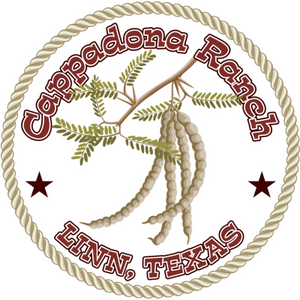Even if you’re a die-hard coffee fan, a caffeine-addict, a servant to the scent of Arabica beans roasting at sunrise, Cappadona Ranch challenges you to take a walk on the wild side. Get in touch with the native land around you by enjoying a freshly brewed cup of mesquite bean coffee and indulge in the sweet flavors the local plant-life has to offer. And while you savor the rich flavors of Cappadona Ranch’s Mesquite Bean Roasted Coffee, learn a bit about the history and culinary rise of mesquite beans.
Mesquite Trees: A Brief History
To learn about mesquite beans, we should first consider the unique qualities of the mesquite tree. Mesquite trees can be found all throughout South Texas and so we don’t often pay much mind to them. They are simply another plant native to this semi-arid region. But mesquite trees have quite a fascinating and lengthy history dating back to the Pleistocene epoch - more commonly known as the Ice Age. During this time, herbivores - or plant-eaters - like mammoths, mastodons, and even ground sloths, would eat the pods of the mesquite trees. The pods would spread far and wide across the land as these animals migrated and left their droppings. While not the prettiest method, it still created the perfect conditions for the pods to grow into healthy mesquite trees. As these animals became extinct, the mesquites retreated to the floodplains. It wasn’t until cattle and other grazing animals came along that mesquite trees expanded throughout the country again. Over time, these trees were contained to the southwestern United States and Mexico, where natives learned to use mesquite for a variety of culinary, medicinal, and construction purposes.
Mesquite Beans in the Native Diet
Mesquite beans are ready to harvest in the late summer months, usually July through August, and sometimes in the early fall season. You’ll know they’re ready for picking once the pods have turned hard and golden in color. If you give the pod a little shake and hear the beans rattle inside, they’re good to go. The pods themselves are very sweet, a tasty attribute of their high fructose content - or fruit sugar - as it is more popularly known. Native peoples would ground the pods and beans into a meal to make round cakes or flat breads. The pods would be left to dry and crumble in the sun before being ground into meal on a
metate, a flat stone tool with a curved surface. Today, thanks to a little culinary experimentation and creativity, natives of the region, like the Cappadona Ranch family, have found ways to use these high-fiber pods as the star ingredient of not only
flour, but delicious jellies, tea, and coffee.
The mesquite bean offers a unique alternative to that beloved caffeinated beverage. A sip is all it takes. Just a sip of mesquite bean roasted coffee will leave you second-guessing your allegiance to plain old coffee. While mesquite bean coffee is caffeine-free, the high fructose content ensures that you slip into a naturally light and uplifted mood. Or do you suffer acid reflux or upset stomach after drinking regular coffee? Some of us weather-the-pain because we love the taste and energy that coffee provides. You can rest assured that mesquite bean roasted coffee won’t give you heartburn. Mesquite bean coffee offers a pleasantly bold flavor profile similar to that of coffee and a healthy dose of fiber, all in a cup of hot or iced beverage. A single tablespoon of
Cappadona Ranch’s Mesquite Bean Roasted Coffee offers 40 calories and five grams of dietary fiber. It is truly an excellent source of fiber!
Homemade and all natural, Cappadona Ranch’s Mesquite Bean Roasted Coffee taste like great memories and simpler times.
Whether you’re a native of Texas or a visitor curious about local flavors, our Cappadona Ranch family hopes that you’ll love our delicious mesquite bean roasted coffee as much as we do!





